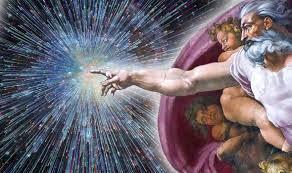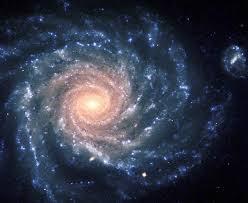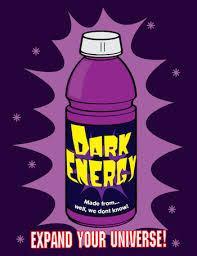 We start from the fact that the Universe was created by God in 4004 BC.
We start from the fact that the Universe was created by God in 4004 BC.
Oops, not exactly. It was actually more like 13,800,000,000 BC (give or take a year or two). The event is called the Big Bang — a name given by astronomer Fred Hoyle intended sarcastically — and it was not an “explosion.” Rather, if you take the laws of physics and run the tape backwards, you get to a point where the Universe is virtually infinitely tiny, dense, and hot. A “singularity,” where the laws of physics break down — and we can’t go farther back to hypothesize what came before. Indeed, since Time began with the Big Bang, “before” has no meaning. Nevertheless, while some might say God did it, it’s reasonable instead to posit some natural phenomenon, a “quantum fluctuation” or what have you.

That was followed by the “Inflationary Epoch,” which also went fairly quick, ending when the Universe was still a youngster 10-34 of a second old.

After that hectic start, things became more leisurely. It took another few hundred million years, at least, for the first stars to twinkle on.
This is the prevailing scientific model. If you find this story hard to believe, well, you can believe the Bible instead.

Now, it was Hubble who in 1929 made the astounding discovery that some of the pinpoints of light we were seeing in the sky are not stars but other galaxies. And more, they are moving away from us; the farther away, the faster. Actually, it’s not that the galaxies are moving; rather, space itself is expanding.

But there are two big mysteries. Newton posited that the force of gravity is proportional to mass and diminishes with the square of the distance between masses. However, what we see in other galaxies does not conform to this law; it’s as though there has to be more mass. We don’t yet know what that is; we call it “dark matter.” (There is an alternative theory, that Newton’s law of gravity doesn’t hold true at great distances, which might account for what we see with no “dark matter.”)

“Ordinary matter” (that we can detect) accounts for only 5% of the Universe. Another 24% is dark matter and 71% dark energy. (Remember that matter and energy are interchangeable. That’s how we get atom bombs.)

(This is my recap of a recent talk by Vivek Jain, SUNY Associate Professor of Physics, at the Capital District Humanist Society.)
Advertisements